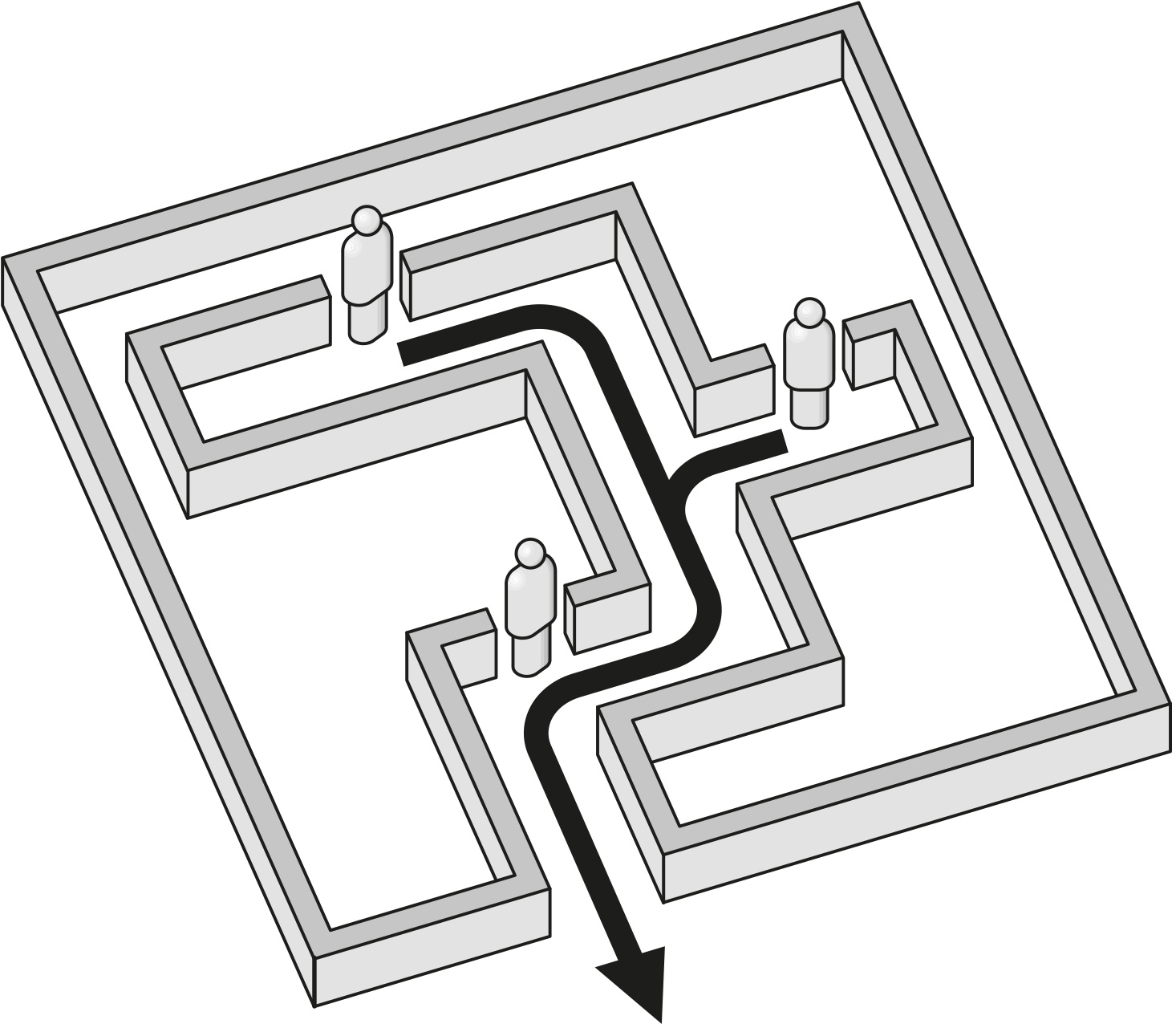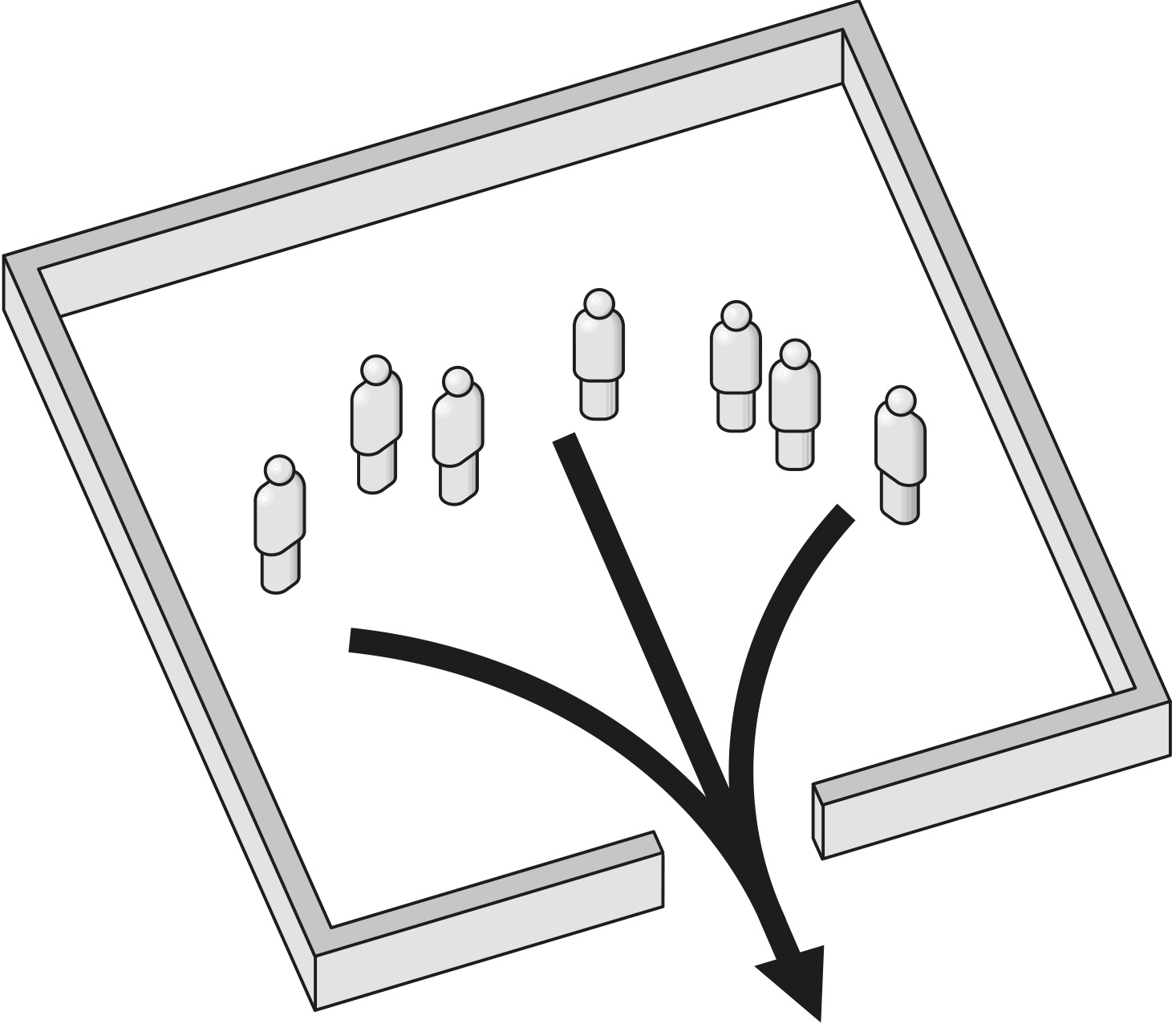Fittings for emergency exits and panic doors
DIN EN 179 | DIN EN 1125

Emergency-exit devices consist of a lock and door fitting. They are designed to guarantee that one action suffices to release and open an emergency-exit door in hazard situations, regardless of whether it is locked or merely on the latch.
The use of products conforming to DIN EN 179 (emergency-exit devices) and DIN EN 1125 (panic exit devices) is a frequent – or perhaps abiding – subject of discussion. Focus centres on the discrepancy between building-authority regulations and the provisions of liability law in the first instance.
It can be concluded that the standards referred to have now attained the status of established rules of engineering. Adopting the relevant hardware solutions is thus definitely to be recommended, assuming they are not stipulated in the invitation to tender in any case. Both standard and special-purpose building regulations require that the doors in escape routes be easy to open from the inside to their full width, with a handle if necessary. DIN EN 179 specifies the use of, and requirements for, locks on emergency exits fitted with handles and push pads.
Combinations of fittings within the meaning of EN 179 must be considered as products subject to building regulations and requiring EU or CE conformity labels. They consist of lock, door fitting and striking plate and must have been tested and certified together. FSB supplies what must be the most wide-ranging selection of hardware in the sector in this respect precisely so you do not need to worry about such technicalities.
Matters are a little more complicated where DIN EN 1125 is concerned. Under this standard, panic door devices (= lock + striking plate + push bar) are to be fitted wherever high levels of public traffic are to be expected and where panic may arise due to unfamiliarity with the surroundings. As FSB reads it, this is a reference to assembly rooms, theatres, cinemas, discotheques etc.
We are very much of the opinion that the ultimate decision as to where panic devices operated by push bars are to be fitted should lie with the architect/planner – in liaison with the relevant building authority, of course.
Downloads:
DIN EN 179 – Emergency exit devices with handle or push pad
Escape-route scenario for emergency exits
(DIN EN 179)
Emergency-exit devices consist of a lock and door fitting. They are designed to guarantee that one action suffices to release and open the emergency exit in hazard situations, regardless of whether the door is locked or merely on the latch. The standard specifies the requirement profile and test criteria governing door fittings and locks.
The door fittings and locks for such devices are required to be jointly tested, certified by a recognised certification centre and accorded a CE conformance kitemark. They shall be technically state-of-the-art and are to be rated as regulated building products within the scope of harmonised standards or else as building products under Germany’s Building Rules List B/Part 1. FSB has had appropriate door-fitting/lock combinations tested and certified in conjunction with lock makers
DIN EN 1125 – Panic devices with crossbar for doors in escape routes
Escape-route scenario for panic doors
(DIN EN 1125)
This European standard sets forth requirements for the manufacture, fitness for function and testing of panic exit devices. The completely flush panic devices popular in neighbouring countries were presumably taken as the model when prescribing the performance criteria.
The design types common in the Federal Republic of Germany comprise a crossbar, lock and striking plate. The FSB range has long included a combination of bar furniture and mortice locks. Under the standard, it is necessary to test and certify this combination as a functional unit. Approved panic exit devices are accorded the CE conformance kitemark. They shall be technically state-of-the-art and are to be rated as regulated building products within the scope of harmonised standards or else as building products under Germany’s Building Rules List B/Part 1.
A panic device is required to be designed in such a manner that it immediately releases the door if pressure is applied to any point on the push bar on the inside of the door in the direction of escape. The force applied must be such that children and mobility impaired persons can disengage the locking mechanisms in place too. FSB has had its panic-bar fitting tested and certified in conjunction with lock makers.
FSB panic devices have also been tested together with locks by Messrs Fuhr and SSF for single-leaf doors.





































